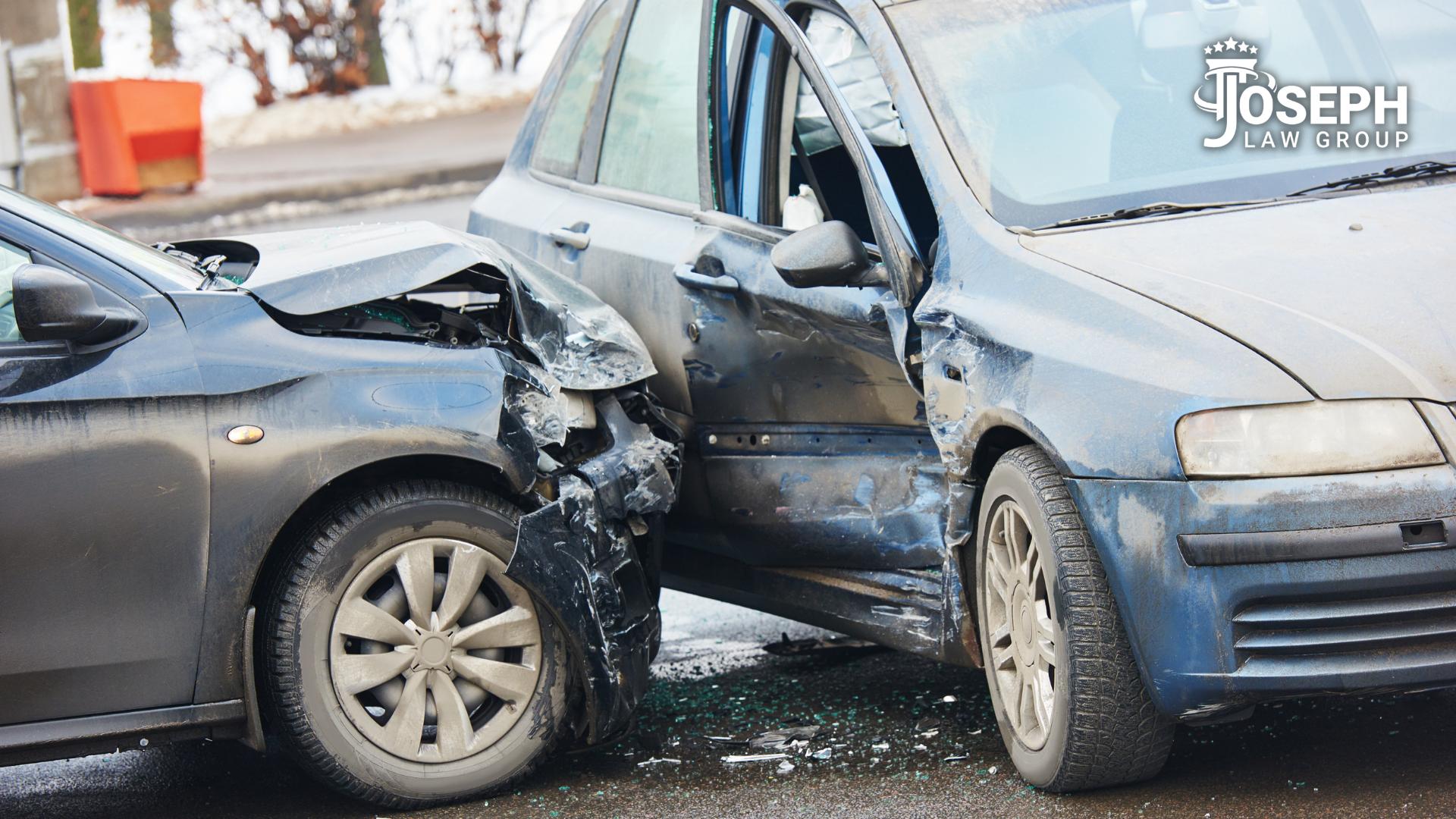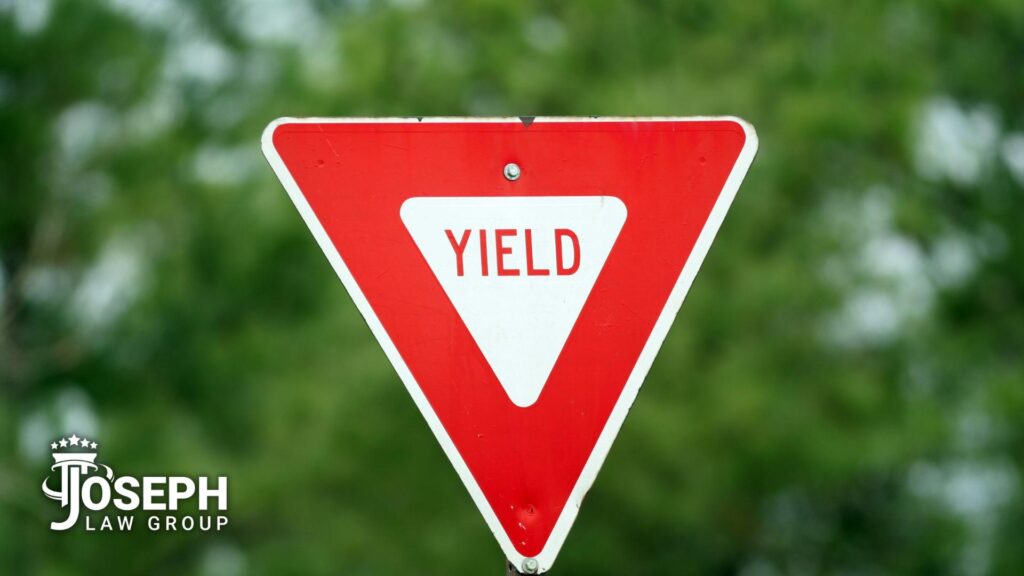Even though everyone is required to complete a driver’s education course before receiving their license, many drivers can forget certain road rules over the years. One of those traffic laws is yielding the right-of-way. Some motorists either forget who has the right-of-way at intersections or are in such a hurry that they don’t care. When a driver fails to yield, they can cause a car accident, resulting in serious injuries.
In this blog post, the Cleveland personal injury attorneys from Joseph Law Group give a refresher course on the right-of-way laws in Ohio and what legal options you have following a failure-to-yield accident.
Yield Definition
The term “yield” means to concede or give way. The yield sign means drivers should approach an intersection slowly and let other drivers go first. These traffic signs are usually posted at intersections where two roads merge.
Right-of-Way Definition
The right of way, according to traffic laws, refers to the pedestrian or vehicle that can proceed first in an intersection. This can include turning, using a crosswalk, merging into traffic, crossing an intersection, and more.

What Does it Mean to Yield the Right-of-Way?
Yielding the right of way means that the driver approaching an intersection allows the other vehicle or pedestrian the right to move through the intersection first.
Ohio Right-of-Way Laws
Ohio has several laws stating who has the right of way in intersections based on the intersection type. Failure to yield at these intersections can not only result in a traffic ticket but it can also lead to a car accident.
Right-of-Way at Intersections
The right-of-way rules at intersections are outlined under Ohio Revised Code Section 4511.41. This law states that if both cars reach an intersection at the same time, the vehicle on the left should yield to the driver on the right. Failure to yield under this statute can result in a minor misdemeanor offense.
Right-of-Way When Turning Left
According to Ohio Revised Code Section 4511.42, the driver turning left at an intersection should yield the right of way to the other vehicle approaching from the opposite direction if that vehicle is close to the intersection.
Right-of-Way Through Highways, Stop Signs, and Yield Signs
Ohio Revised Code Section 4511.43 outlines right-of-way laws for yield signs, stop signs, and highways. According to Ohio Revised Code Section 4511.43(A), once a driver stops at a stop sign, they are to yield the right of way to any other vehicle in the intersection or approaching from another route so closely that it could be considered a hazard.
Under Ohio Revised Code Section 4511.43(B), the law states that any driver approaching a
yield sign should slow down to a reasonable speed. If the driver needs to come to a complete stop at the intersection, they should do so. Drivers must stop at the stop line to avoid entering a marked or unmarked crosswalk or intersecting road. If the driver should need to stop, treat the intersection like one with a stop sign.
Additional Right-Of-Way Laws in Ohio
In addition to the Ohio statutes listed above, there are other right-of-way rules that all Ohio drivers should be familiar with, including:
- Yield to other traffic if turning right at a red light.
- Yield to oncoming traffic when turning left.
- Treat an intersection with a broken traffic control device the same as a four-way stop.
- Yield to jaywalking pedestrians.
- Yield to individuals walking with a white cane or guide dog.
- Stop when flagged down by a police officer.
- Drivers traveling through a highway or street have the right of way over vehicles at intersecting streets.
- When the lights and/or sirens are on, yield the right of way for emergency vehicles, including coming to a complete stop until the emergency vehicle has passed. Motorists should move or pull over enough to allow an oncoming emergency vehicle to pass.

What Happens if You Don’t Yield the Right-of-Way?
Failure to yield accidents are extremely common and often occur when a driver is in a hurry and ignores traffic laws. When a driver fails to yield, it can lead to significant car accidents and serious injuries.
A T-bone collision is one of the most common accidents that can occur when a driver ignores the right-of-way laws. These accidents, also called side impact or broadside collisions, are often the result of a driver ignoring traffic signals. Common t-bone injuries are whiplash, traumatic brain injuries, neck injuries, and back injuries.
A head-on collision is another type of car accident that can occur when drivers fail to follow right-of-way rules. When two vehicles traveling opposite each other collide, the results can be devastating. This can happen when a driver speeds through an intersection where oncoming traffic has a green light. Head-on collisions are extremely dangerous and can result in catastrophic injuries, such as spinal cord injuries and traumatic brain injuries.
The third type of car accident that can be caused by failure to yield is a left-hand turn accident. These accidents happen when the at-fault driver pulls into traffic without yielding the right of way to oncoming traffic. Other drivers may not have enough time to stop or avoid colliding with the other vehicle. Left-hand turn accidents can result in injuries similar to t-bone accidents since the side portion of vehicles has fewer airbags.
In addition to causing an accident and injuries, failure to yield can also result in a minor misdemeanor offense. Those guilty of this traffic violation are usually required to pay a $150 fine and administrative and court fees. In Ohio, the Bureau of Motor Vehicles uses a point system when keeping up with a driver’s traffic offenses. A citation for failure to yield will result in two penalty points. These points will remain on a driver’s record for two years. Drivers who accumulate 12 points over two years can have their license suspended for six months.

Car Accidents Involving Right-of-Way Violations
If you were injured in an accident where the other driver failed to yield, you could be entitled to financial compensation. Proving the other driver was negligent can be challenging in failure-to-yield cases, which is why it’s important to work with an experienced Cleveland car accident attorney.
The personal injury attorneys at Joseph Law Group have helped clients recover some of the following damages following a car accident:
- Medical expenses, both past and future
- Lost wages
- Physical pain and suffering
- Emotional distress
- Property damage
- Loss of enjoyment of life
- Physical therapy
- Counseling
If injuries sustained in a failure-to-yield accident led to the death of your loved one, you could pursue a wrongful death lawsuit against the at-fault driver. To learn more about your options following the loss of your loved one, contact Joseph Law Group today.

Injured in a Right-of-Way Accident? Call the Cleveland Personal Injury Attorneys at Joseph Law Group Today
Many drivers ignore the right-of-way rules because they are in a hurry or don’t understand them. It’s always important to proceed with caution when approaching an intersection, especially since you never know what the other driver will do. Even if you have the right of way, the other driver may not realize it and barrel through the intersection, causing a car accident.
If you were involved in a car accident caused by another driver’s failure to yield, you could be entitled to compensation for damages. The Cleveland car accident attorneys at the Joseph Law Group are ready to handle your personal injury claim. When you choose Joseph Law Group, you can trust that your attorney will protect your rights and work to recover maximum compensation.
To schedule a free consultation, call Joseph Law Group at (216) 522-1600 or contact us online to meet with a Cleveland personal injury attorney today.

















